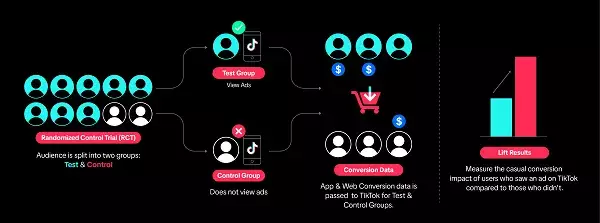In the fast-evolving world of digital marketing, platforms are continuously striving to enhance their offerings to attract advertisers, especially during peak shopping seasons such as the holidays. As part of this strategy, TikTok has unveiled an impressive suite of automated advertisement solutions aimed at optimizing user engagement and maximizing advertising potential. This article explores TikTok’s new offerings and their significance to marketers navigating the complex digital landscape.
One of the standout features introduced by TikTok is “Smart+,” a fully automated advertising solution designed to streamline the ad creation process. Unlike traditional advertising methods that often require manual intervention at multiple stages, Smart+ automates critical tasks such as targeting, bidding, and creative asset selection. Advertisers need only input their budget and targeting objectives; the system takes over from there, presenting the optimal ad to the right audience.
This shift towards automation is not merely a trend; it reflects a broader industry movement towards leveraging artificial intelligence in advertising. Competitor platforms, including Meta and Pinterest, have already initiated similar strategies with their own automated solutions. TikTok’s decision to adopt a comparable framework underscores the increasing demand for efficiency in ad campaigns. Moreover, the initial results are promising, with reports suggesting that advertisers utilizing Smart+ Web Campaigns are experiencing a remarkable 52% increase in return on ad spend. This statistic alone indicates that marketers may benefit significantly from embracing automation techniques, particularly during the competitive holiday season.
In addition to Smart+, TikTok is launching “GMV Max,” a tool that automates the creation of TikTok Shop campaigns. This innovation aims to boost gross merchandise value (GMV) for sellers on the platform. GMV Max unifies various traffic sources—including organic content, paid advertisements, and affiliate posts—into a single streamlined campaign to enhance overall investment returns. Such a centralized approach can simplify the often complex process of reaching the desired audience across multiple touchpoints.
By aligning ad campaigns with TikTok user behavior, GMV Max aims to increase sales opportunities, providing merchants with the tools necessary to optimize exposure for their products. As the social commerce sphere expands, tools like GMV Max become invaluable for brands looking to leverage TikTok’s unique audience while also maintaining resource efficiency. Currently, GMV Max is available to U.S. and Southeast Asian advertisers, indicating its initial strategic rollout where it can potentially see substantial uptake.
Another critical aspect of TikTok’s announcement involves the introduction of Privacy-Enhancing Technologies (PETs) that allow advertisers to glean insights from consumer data without compromising privacy. As scrutiny over data usage intensifies, these technologies will enable marketers to refine their strategies while adhering to consumer privacy concerns.
Moreover, TikTok is also launching Conversion Lift Studies, allowing advertisers to evaluate the overall impact of their campaigns more effectively. This measurement capability is crucial for understanding the true conversion rates attributed to TikTok ads, providing marketers with actionable insights to inform future campaigns.
Bridging Automation and Consumer Engagement
While many marketers may feel apprehensive about relinquishing control to AI and automated processes, TikTok’s new features present a compelling case for experimentation. The results thus far suggest that automated systems can drive enhanced performance, making them worth considering as part of a comprehensive marketing strategy.
TikTok’s recent innovations reflect a strategic push towards optimizing advertising efficiency while remaining attuned to consumer privacy. As digital advertising continues to evolve, tools like Smart+ and GMV Max could play transformative roles for advertisers seeking to navigate the complexities of consumer engagement and maximize their investments. Embracing such advancements will likely be crucial for those aiming to stay competitive in an increasingly automated advertising ecology.

